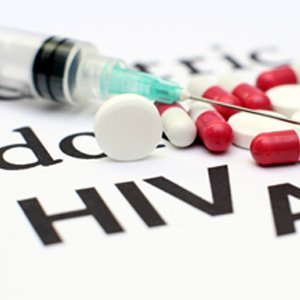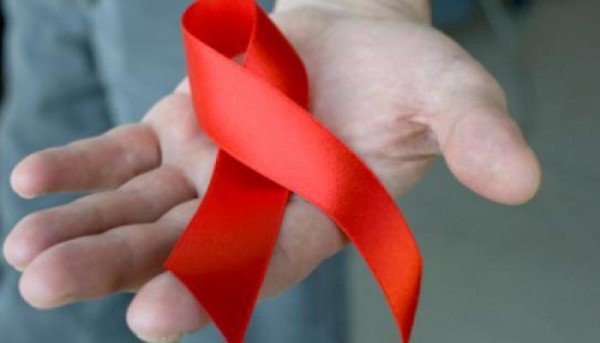Antiretroviral therapy (ART) is a combination of drugs used to treat HIV.
It is not a cure, but can control the virus so that patients can live a longer, healthier life and reduce the risk of transmitting HIV to others.
Antiretroviral drugs prevent HIV from multiplying, which reduces the amount of the virus in the body.
Having less HIV in the body gives the immune system a chance to recover and fight off infections and cancers.
By reducing the amount of HIV, antiretrovirals also reduce the risk of transmitting the virus to others.
According to a United Nations AIDS report, the goal to get HIV treatment to 15 million people by the end of 2015 has already been met.
The landmark figure was reached in March – nine months ahead of schedule.
It follows decades of global efforts and investment to get antiretroviral drugs to those in need – such as people living in sub-Saharan Africa.
In 2000, when the UN first set goals to combat HIV, fewer than 700,000 people were receiving these vital medicines.
According to UNAIDS, which has a report out today, the global response to HIV has averted 30 million new HIV infections and nearly eight million AIDS-related deaths since the millennium.
Over the same time frame, new HIV infections have fallen from 2.6 million per year to 1.8 million, and AIDS-related deaths have gone down from 1.6 million to 1.2 million.
Meanwhile, global investment in HIV has gone up from $4.8 billion in 2000 to more than $20 billion in 2014.
And concerted action over the next five years could end the AIDS epidemic by 2030, says UNAIDS.
However, progress has been slower in some areas.
A major gap seems to be in awareness of HIV status, which is the biggest barrier to treatment access, says the report.
And treatment access for children has lagged behind adults – although this is now improving.
The proportion of children living with HIV who receive antiretroviral therapy almost doubled between 2010 and 2014 (from 14% to 32%), but coverage “remains notably lower than it does for adults”, says the report.
Even though new HIV infections have gone down, there is still an unacceptable number of new HIV infections each year, contributing to the burden of the epidemic.
In 2014, sub-Saharan Africa accounted for 66% of all new HIV infections. And at the last headcount, there were an estimated 25.8 million people in this region living with HIV. The estimated count for the whole world was 36.9 million.
This year sees the switch from Millennium Development Goals to broader Sustainable Development Goals.
Ban Ki-moon, Secretary General of the United Nations said: “The world has delivered on halting and reversing the AIDS epidemic.
“Now we must commit to ending the AIDS epidemic as part of the Sustainable Development Goals.”
The report says the next five years will be critical and recommends front-loading investment to “sprint” towards an ambition of ending the AIDS epidemic by 2030.
According to a UN report, the number of HIV infections and AIDS-related deaths has fallen dramatically last year.
Death rates fell from 2.3 million during its peak in 2005 to 1.6 million last year, says UNAIDS.
The number of new HIV infections fell by a third since 2001 to 2.3 million.
Among children, the drop was even steeper. In 2001 there were more than half a million new infections. By 2012 the figure had halved to just over a quarter of a million.
The authors put the fall in deaths and infection rates in children down to better access to antiretroviral drugs which help suppress the virus.
Without treatment, people with HIV can go on to develop AIDS which makes simple infections deadly.
By the end of 2012 almost 10 million people in low and middle income countries, including South Africa, Uganda and India, were accessing antiretroviral therapy, according to the report.

The number of HIV infections and AIDS-related deaths has fallen dramatically last year
The improved access is being attributed to drugs being more affordable and available in communities, as well as more people coming forward for help.
According to UNAIDS, the world is “closing in” on its Millennium Development Goals to stop and reverse the AIDS epidemic by 2015.
But it says the world can go beyond its target of getting 15 million people on HIV treatment by 2015. The World Health Organization has now revised its guidelines making even more people eligible for treatment.
The report also found that progress has been slow in providing HIV services to people who are most at risk of infection, like those who inject drugs.
And it highlights the need to do more to deal with violence against women and girls. They make up a key group of people vulnerable to infection.
Bev Collins, Health Policy Advisor at Doctors without Borders said: “Huge leaps forward have been made to make sure that millions of people – especially in the developing world – can access lifesaving HIV treatment at an affordable price.
“But this is no time for complacency. We need to keep on rolling out access to better treatment strategies, expanding access to accurate, cost-effective testing, and to care”



